The Veiltail betta fish is a beautiful-looking fish often kept as pets. Originating from Southeast Asia, they are known for their long, translucent tails and intense colors, which give them an exquisite appearance. These translucent tails are caused by a thin layer of skin covering their tails, creating a see-through effect.
One would expect such a beautiful fish to be difficult to take care of, but that is not the case. In fact, despite their appearance, Veiltail bettas are pretty hardy fish. This article will discuss everything you need to know about these attractive freshwater fish, including their lifespan, care requirements, and more!
Characteristics/Appearance/LifeSpan
Common Name (species)
Veiltail Betta Fish, Siamese Fighting Fish (Generic)
Family
Osphronemidae
Origin
Southeast Asia
Diet
Carnivore
Care Level
Easy to Intermediate
Activity
Active, social, alert
Temperament
Calm and gentle but can become aggressive when they feel threatened
Tank Level
Bottom
Minimum Tank Size
5 Gallons
Temperature Range
75-86 degrees Fahrenheit
Water Hardness
0 and 25 KH
pH Range
6.5 – 7.5
Filtration/Flow Rate
Calm
Breeding
Egg layer
Compatibility
Similarly-sized community fish
OK, for Planted Tanks?
Yes, but ensure the plants do not have jagged edges
Activity Level and Temperament
Veiltail bettas may look very different compared to wild betta species, but they still have the same active and alert personality. These fancy bettas are known to be gentle fish, but can become aggressive when they feel threatened or are not comfortable with their surroundings.
It is important to provide Veiltail bettas with plenty of hiding spots in their tank, mimicking the natural environment as much as possible. This will help reduce stress and keep them calm. In the wild, these fish would often hide between the plants’ roots and in small crevices. Replicating this in their tank will help them feel more at ease.
Veiltail bettas are also social creatures that take an interest in their environment. Speaking from personal experience, nothing beats the feeling of walking up to your tank and having your fish come up to the glass to greet you!
Their little fins will start to quiver in excitement as they swim towards you, begging for food. It’s definitely a moment that makes all the time and effort put into caring for them worth it.
Compatibility/Suitable Tank Mates
Because veiltails can be difficult fish when their tank is not set up correctly, it’s important to do your research on what other fish you can keep with them before adding anything to the tank. Generally speaking, the best tank mates for veiltail bettas are other peaceful, slow-moving aquarium fish that won’t compete with them for food.
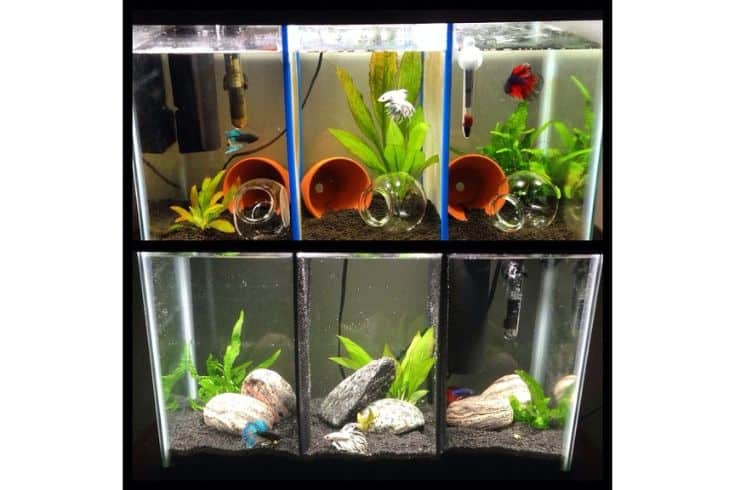
Some examples of compatible fish include:
- Corydoras catfish
- Guppies
- Platies
- Mollies
- Some shrimp species
On the other hand, colorful fish such as neon tetras and guppies may be seen as a threat by your veiltail, as their bright colors can be interpreted as a sign of aggression. Fish with long, flowing fins, such as angels and bettas may also be seen as a threat, as their fins resemble those of a rival male. These traits make them difficult fish to keep with a veiltail.
In addition, it is also important to avoid housing multiple male veiltails together, as they are known to be very aggressive towards each other and will often fight to the death. Consider a fish sorority tank if you want to keep more than one veiltail in your tank. You’ll still need to provide plenty of hiding spots to reduce aggression, but it will be a much more peaceful tank overall.
Feeding
What to Feed
Veiltail bettas want a carnivorous diet, which means you can’t give them fish food flakes only! They need protein, aka meaty foods. Some healthy carnivore diets to feed your Veiltail betta fish:
- Brine shrimp
- Kuhli Loaches
- 2-3 Betta fish pellets, e.g., algae
- Live foods such as daphnia, mosquito larvae
In most cases, we recommend feeding your fish frozen food because live foods can increase the risk of harmful organisms and parasites in your fish.
Feeding Frequency
We recommend feeding your Veiltail betta fish 2-3 times per day. Generally speaking, most hobbyists feed their bettas once every 12 hours.
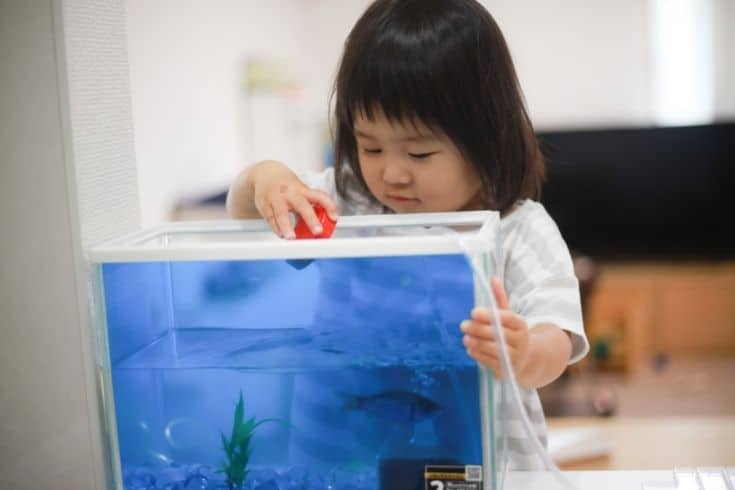
To prevent overfeeding, only give your pet fish as much food as they can eat in 2 minutes. If there is still uneaten food after 2 minutes, remove it from the tank so that it doesn’t pollute the water.
What Not to Feed?
If you’re looking for a clear-cut rule, here it is: If it is not meat, don’t give it to your Veiltail betta fish. These carnivores cannot properly digest food such as fruits or vegetables, which might cause problems in their digestive system.
However, the truth is more nuanced than that. While it’s technically true that bettas can’t digest fruits and vegetables, there are some exceptions. For example, many betta fish owners feed cooked peas as a treat because they are high in fiber and help with constipation.
If you’re unsure whether a certain food is suitable for your fish, the best course of action is to avoid caution and not give it to them.
Tank Requirements
Tank Size
The minimum tank size for a veiltail betta fish is 5.0 gallons. However, we recommend a larger tank if you can, and a larger tank will give your fish more space to swim and explore.
Veiltail Fish Tank Setup
What You’ll Need:
Before setting up a home for your veiltail bettas, you need to first gather the following supplies:
- A 5.0 gallon or larger fish tank
- A lid for the tank
- An aquarium stand (if needed)
- A water heater
- An aquarium filter
- Substrate (we recommend using gravel)
- Live plants (optional but recommended)
- Decorations (optional but recommended)
- A water test kit
- A net
- Betta fish food
Once you have all the supplies, you can start setting up the tank!
Step 1: Choose the Right Location
The first step in setting up your veiltail betta fish tank is to choose the right location.
Choosing the right location for your tank for the correct lighting is crucial. The tank should be in a quiet area away from direct sunlight, and the fishes prefer a shady and dim environment.
Typically, bettas need 8-12 hours of correct light daily and up to 16 hours of darkness. You can provide them with a 12-hour light/dark cycle using an aquarium hood with an incandescent light bulb. Artificial lights are okay, but you have to ensure it does not change the temperature of the water.
Step 2. Install Tank Accessories
Your tank filter and heater are essential accessories you need to install before adding water and fish. Be sure to choose the right tank filter for your fish. The filter will remove fish waste and toxins from the water, thus keeping your fish comfortable and healthy. In addition, veiltails are tropical fish and prefer warm water, so you will need to get an aquarium heater.
Installing your accessories at this juncture is important because it’s much easier to do when the tank is empty.
Step 3: Decorate the Tank
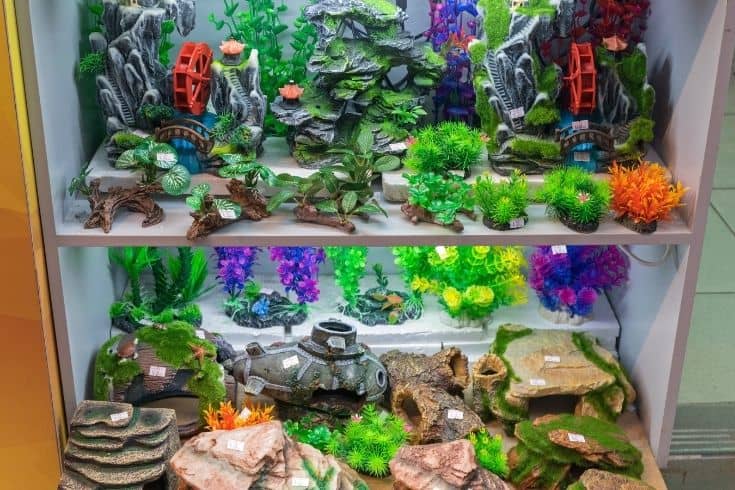
Tank decor is optional, but we recommend it because it makes the tank look more appealing and can provide hiding places for your fish. A basic tank setup will consist of plants and gravel.
When it comes to gravel, opt for something between 1-2mm in size. Anything larger than that might be too big for your fish and can pose a choking hazard. As for plants, live plants are always best option. They look nice, and plants make great hideout spots for your bettas.
Most plants work fine in a betta tank, but be sure to steer clear of the following:
- Plants that have sharp edges. These can injure your fish if they brush up against them.
- Artificial plants can be harmful to your fish.
Step 4: Cycle The Tank
If you’re new to fish keeping, the term “cycling” might not mean much to you. Cycling is the process of establishing a beneficial bacteria colony in your tank. Beneficial bacteria form a biological filter that will help to break down ammonia and nitrites.
You can cycle your tank using fishless cycling or by adding a few hardy fish like danios. We prefer the fishless method because it’s less stressful for the fish. To cycle your tank using the fishless method, you’ll need to add ammonia to the tank. You can buy ammonia at your local pet store or online. Be sure to get pure ammonia with no scent or additives.
Once you’ve added the ammonia, you’ll need to test the levels daily and add more as needed. After about 2-4 weeks, the ammonia levels should start to drop. This is an indication that your beneficial bacteria colony is growing.
Once the ammonia levels have dropped, you can now add your veiltail bettas to the tank!
Step 5: Add Your Fish
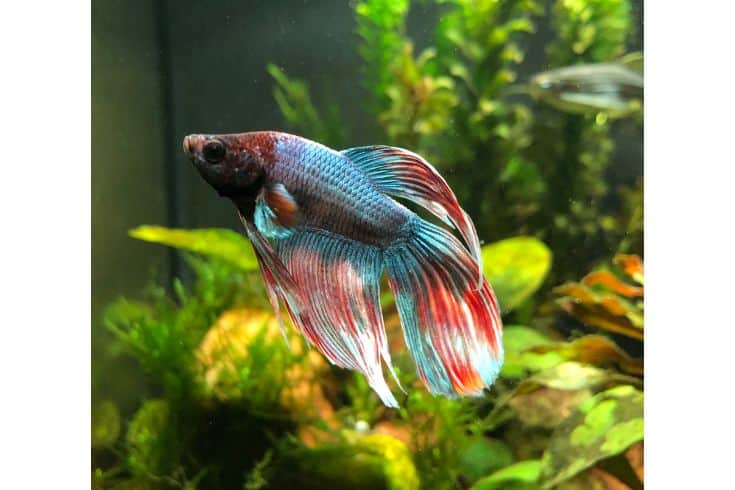
Last but not least, it’s time to add your fish! When adding your fish to the tank, be sure to do so slowly and acclimate them to their new environment properly.
Begin with acclimating your fish to the water. To do this, float the bag containing your fish in the tank water for about 15 minutes. This will help to equalize the temperature between the bag water and tank water. Repeat this process at 15-minute intervals until the bag is full of tank water. This acclimation process should take about an hour.
And there you have it! These are the basic steps for setting up a veiltail betta fish tank. Just remember to test your water quality from time to time, and to keep up with regular water changes. Your veiltail betta fish will thrive in their new home with proper care.
Veitail Aquarium Tank Myths and FAQs
Knowing how to set up a tank is only half the battle. To be a true veiltail betta fish expert, you need to know the ins and outs of keeping them healthy and happy. This section will dispel some common myths about veiltails and answer some frequently asked questions.
Do I need to wait a week after setting up my tank before adding fish?
There is an ounce of truth to this myth, as betta tanks do need to be cycled before fish are added. However, tank cycling typically takes between 6 to 8 weeks and not a week as this myth suggests. You can learn about the three tank cycling methods here, and pick one that works best for you.
If your tank has already been cycled, there is no need to wait a week before adding fish as this myth suggests. Just be sure to give your fish enough time to acclimatize to their new environment!
Is It true that you need to add salt to keep your fish healthy?

In most cases, this is not true. Salt is not necessary for most freshwater fish and can actually be harmful to your bettas.
However, adding small quantities of salt to your betta can be beneficial under some circumstances. For instance, if your betta is suffering from velvet or ich, a salt bath can help to kill the parasites.
It’s always best to consult with a veterinarian or experienced fish keeper before adding salt to your tank, as too much salt can be harmful to your fish.
Do I need a quarantine tank?
While a quarantine tank is not required, it is always a good idea to have one on hand in case your fish becomes sick. This will allow you to treat your fish without harming the other fish in your tank.
A quarantine tank is also a good place to put new fish when you first bring them home. This will allow you to observe them for any signs of illness before adding them to your main tank.
Habitat Requirements
After setting up your tank, it’s important to provide your fish with the proper habitat. This includes adding hiding places, plants, and other decorations.
Water Requirements
- pH Level: pH levels measure how acidic or basic your water is. The ideal pH level for a veiltail betta fish tank is between 6.5 and 7.5.
- Water Hardness: GH and KH levels measure the water hardness, or the amount of dissolved minerals in your water. The ideal GH level for a betta fish tank is between 4 and 12 dGH. Thi refers to the dissolved concertation of calcium and magnesium ions.
- On the other hand, KH levels measure your water’s ‘buffering’ ability. This is the ability of your water to resist changes in pH. The ideal KH level for a betta fish tank is between 3 and 10 dKH.
- Water Temperature: The ideal water temperature for a veiltail betta fish tank is between 75 and 82 degrees Fahrenheit. This replicates the warm, tropical waters that bettas are used to.
Filtration
Veiltails are not fans of strong currents, so get a filter with adjustable flow. This will ensure that your fish has a comfortable environment to swim in.
Pick a filter that will not disrupt the water surface – you can choose either an internal filter or a sponge filter.
Plants and Decoration
We’ve briefly talked about the importance of a well-decorated veiltail tank. In addition to providing your fish with hiding places, plants also help to oxygenate the water and keep the tank clean.
Some good plant choices for a veiltail betta tank include:
- Anacharis
- Java Fern
- Hornwort
- Water Sprite
You can also make caves out of things like logs, driftwood, or rocks. Something to keep in mind is that any decorations you add should not have any sharp edges – otherwise, your fish might hurt himself.
Common Health Issues
Health Issue
Ich (White Spot Disease)
Symptoms or Causes
Ich is a very common disease that’s caused by an aquatic protozoan parasite.
Fish infected with Ich develop a sprinkling of tiny white spots on their fins, gill covers, and bodies. They also flash against the gravel and other solid objects in the aquarium.
Suggested Action
Raise the water temperature to 82o F for three days. Use an OTC White Spot Disease medication to treat the tank.
Health Issue
Flukes
Symptoms or Causes
Flukes is the term used to describe various types of external fish parasites. These macroparasites can often be seen with the naked eye attached to the fish’s skin or gills.
Suggested Action
Treat the fish tank with an OTC antiparasitic medication.
Health Issue
Fungal infections
Symptoms or Causes
White fluffy growths on the fish’s body, mouth, and head.
Suggested Action
Quarantine infected fish, and treat with an antifungal medication.
Health Issue
Bacterial infections
Symptoms or Causes
Sores and ulcers on the body and head, ragged, bloody fins.
Suggested Action
Treat the tank with OTC antibacterial treatment.
Veiltail Betta Breeding Overview
When veiltail males are ready to breed, they build bubble nests at the water’s surface. These bubble nests are used to protect the eggs until they hatch. To convince the female veiltail betta to lay her eggs, the male will display his fins and chase her around the tank.
Once the female has laid her eggs, the male will carefully pick them up and place them in the bubble nest. After all of the eggs have been collected, the male will aggressively defend the nest from anything that comes near it – including the female. This is a good time to separate your breeding pair from one another.
The eggs will hatch within 24-48 hours, and the fry will be free-swimming after another 5-7 days. At this point, start feeding them baby brine shrimp or other small live foods.
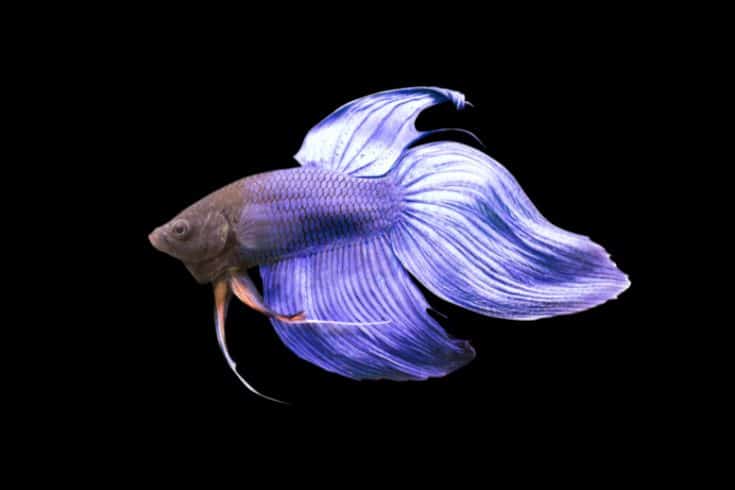
Product Recommendations
Before wrapping up this article, we wanted to give you a few product recommendations. These are all products that we use and love, and we think they would be great for your veiltail betta fish.
- Water Conditioner: If you’re using municipal water, you’ll need to treat it with an aquarium water conditioner before adding it to your tank. We recommend the Seachem Prime Water Conditioner – it’s safe, effective, and easy to use.
- pH Test Kit: Maintaining the proper pH level is crucial for the health of your fish. We recommend the API Freshwater Master Test Kit – it’s affordable, accurate, and comes with everything you need to test your water
- Thermometer: Thermometers ensure that your water isn’t too cold or warm for your fish. They also prevent drastic fluctuations in temperature. We suggest the Aquaneat 1 Pack Aquarium Thermometer.
- Water Filter: Filtering your tank water is so important because it can affect the health of your fish. We recommend getting this quiet water filter by Terrarium. It is excellent for a 2-15 gallon water tank.
- Tank Heater: For a veiltail betta tank, we recommend getting a small aquarium heater. We like this one by Tetra because it’s affordable and works well.
The Takeaway
And there you have it! Everything you need to know about veiltail betta fish – from their lifespan and care requirements to breeding information. We hope that this article has been helpful, and that you feel better equipped to take care of these spectacular fish!
